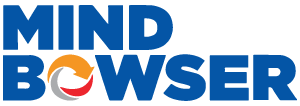As healthcare technology evolves, progressive web apps (PWAs) are emerging as innovators for healthcare applications. PWAs offer an ideal solution by combining the best web and mobile apps, providing a responsive, app-like experience that doesn’t require installation from an app store. For healthcare providers, this means access to critical tools and information across any device without extensive development time or costs associated with native apps.
PWAs ensure that healthcare services remain accessible and user-friendly, no matter the environment, whether online or offline. Key features such as responsive design and connectivity independence make PWAs valuable for healthcare professionals who need reliable, scalable solutions in a fast-paced setting.
PWAs are not just about a seamless user experience; they also deliver connectivity independence, which is crucial for healthcare environments where internet connectivity may not always be guaranteed. With features like app-like interactions and user-first enhancements, healthcare providers can deliver superior patient care, offering tools that operate effectively offline and sync automatically when back online.
This robust technology ensures healthcare professionals can access patient records, manage appointments, and interact with their systems smoothly, regardless of external factors. As we move forward, embracing digital and product engineering, seamless interoperability, data analytics, and scalable cloud solutions will continue to empower healthcare providers to deliver faster, more efficient care.
➡️ Benefits of PWAs in Healthcare

1️⃣ Offline Access to Critical Healthcare Data
PWAs allow healthcare providers to access important patient data and resources without internet connectivity. It ensures uninterrupted service delivery, especially in remote or low-connectivity areas, improving overall patient care.
2️⃣ Faster Loading Times, Improving User Interaction
PWAs load faster by caching resources, resulting in a smoother, more responsive user experience. This minimizes wait times and improves the efficiency of healthcare providers, allowing them to retrieve patient information quickly.
3️⃣ Reduced Development and Maintenance Costs
Developing a PWA is more cost-effective when creating separate native apps for different platforms (iOS, Android, etc.). Maintenance is simplified as updates can be pushed through the web without requiring users to download new versions of an app.
4️⃣ Security Improvements in Healthcare Data Management
PWAs are hosted on secure servers, and features like HTTPS ensure secure data transmission, which is crucial for sensitive healthcare information. With service workers managing background tasks, the chances of data breaches are minimized, enhancing overall data security.
5️⃣ Enhanced Accessibility Across Devices
PWAs are device-agnostic, meaning they work seamlessly across desktops, tablets, and smartphones. It ensures that healthcare providers and patients can access healthcare services from any device, improving the reach and usability of healthcare applications.
Related read: Progressive Web App Development
Related Read: Progressive Web App Development
➡️ Comparing PWAs and Single Page Applications (SPAs)

🔹 Offline Support in PWAs versus Online Dependency in SPAs
PWAs are designed to work offline using service workers that cache important resources, allowing users to access the app even without an internet connection. This is particularly beneficial in healthcare settings where internet availability may be inconsistent.
While SPAs require a continual internet connection to function, which relies on their online access. Without connectivity, SPAs frequently lose functioning, disrupting important healthcare services.
🔹 User Experience and Installation Options
PWAs offer a native app-like experience, providing smooth interactions with features like offline mode and push notifications. Additionally, PWAs can be installed directly from the browser onto a device’s home screen without going through app stores.
SPAs, on the other hand, offer quick navigation after the initial load but do not have the same level of offline capability or the option to install like a native app. Users typically interact with SPAs in the browser.
🔹 Maintenance and Scalability Differences Between PWAs and SPAs
PWAs are easier to maintain and scale as they use a single codebase that works across various devices and platforms. Updates are seamless, and there’s no need to deploy different versions for different operating systems.
SPAs may require additional effort to ensure cross-browser compatibility and don’t offer the same scalability level across devices, as they primarily depend on the web environment. Maintenance might also involve more frequent adjustments to handle performance or compatibility issues.
Related read: Progressive Web Apps Vs. Responsive Web Apps
➡️Role of Web Workers and Service Workers in Healthcare PWAs
1️⃣ Web Workers for Real-time Data Processing and Handling Large Datasets
Web workers operate in a separate thread from the main user interface, which allows them to handle complex, data-intensive tasks without freezing or slowing down the UI.
In healthcare applications, where large datasets (e.g., patient records, medical imaging) need to be processed in real-time, Web Workers enable smooth performance by handling these tasks in the background, ensuring that the app remains responsive for users.
2️⃣ Service Workers for Background Synchronization, Push Notifications, and Offline Support
Service workers act as intermediaries between the app, the browser, and the network. They are responsible for enabling key functionalities like offline support, caching data for future use, and background synchronization.
This is especially critical in healthcare, where professionals may need access to patient data even when offline. Service Workers also support push notifications, keeping healthcare providers updated on important alerts or reminders, even when the app isn’t active.
3️⃣ Improved User Experience Through Efficient Resource Management
Web workers and service workers contribute to a more efficient use of resources in healthcare apps. By delegating heavy tasks to Web Workers and enabling offline access with Service Workers, these technologies help reduce the strain on the main thread and network.
This results in smoother interactions, quicker response times, and a more reliable user experience, vital in healthcare where delays or lag can impact patient care. Efficient resource management also ensures that healthcare applications can scale effectively while maintaining performance.
➡️ Demonstrations and Use Cases in Healthcare
1️⃣ Real-time Applications of Web Workers
🔹 Handling data-heavy processes like medical imaging or large health records
In healthcare, processing large amounts of data, such as medical images or extensive patient records, is common. Web workers enable these tasks to run in the background, making the user interface remain responsive. This is crucial when healthcare providers need quick access to information without delays.
🔹 Enhancing Performance in Web-based Tools Like Data Visualization in Healthcare
Web workers can enhance the performance of data-heavy web-based tools used for visualizing patient information or medical data. By handling complex calculations and rendering processes, ensuring users can interact with the data smoothly without lag, making it easier for healthcare professionals to analyze trends or patient conditions in real-time.
2️⃣ Use Cases of Service Workers
🔹 Offline Support in Patient Management Systems
Service workers provide offline functionality by caching critical resources. In healthcare settings, this enables patient management systems to function even with no internet connection. Healthcare providers can access patient records, manage appointments, and update information offline, with the data automatically synced when the connection is restored.
🔹 Push notifications for critical health updates
Service workers also enable push notifications, which are essential for sending timely updates to healthcare professionals and patients. For instance, doctors can receive notifications about critical health updates, test results, or medication reminders, ensuring they are always informed, even if the app is not actively in use. This feature helps in maintaining communication and ensuring timely responses in healthcare scenarios.
How Mindbowser Can Help You Transform Healthcare With Progressive Web Apps
Mindbowser is dedicated to helping healthcare organizations transform their digital experiences with PWAs. By using the power of PWAs, Mindbowser enables healthcare providers to deliver app-like functionality that works seamlessly across devices without the need for complex native app development. With features like offline access, quick load times, and enhanced security, healthcare providers can ensure reliable and secure access to critical data, even in low-connectivity environments. This leads to improved patient care and a better overall user experience for healthcare professionals and patients.
Additionally, we offer expertise in integrating PWAs with existing systems, such as EHR platforms, ensuring smooth data flow and interoperability. Our tailored solutions cover the entire digital transformation journey, from product engineering to AI-driven data analytics, empowering healthcare organizations to innovate efficiently. With our experience in cloud and infrastructure, we provide scalable, future-ready solutions that grow alongside your business, ensuring that your healthcare applications remain robust, secure, and efficient.

Manisha Khadge, CMO Mindbowser
Manisha Khadge, recognized as one of Asia’s 100 power leaders, brings to the table nearly two decades of experience in the IT products and services sector. She’s skilled at boosting healthcare software sales worldwide, creating effective strategies that increase brand recognition and generate substantial revenue growth.
Let's Get In Touch
One thing that really stood out to me is the culture and values of the Mindbowser team.

Sanji Silva
Chief Product Officer, Mocingbird
I am so glad I worked with Mindbowser to develop such an Impactful Mobile app.

Katie Taylor
Founder and CEO, Child Life On Call
Mindbowser was an excellent partner in developing my fitness app.

Jirina Harastova
Founder, Phalanx Ubiquity
The team understood the challenges faced by both CME administrators and clinicians and translated that understanding into building the platform. We're totally impressed by their deep domain and technology expertise in creating a solution that empowers both administrators and medical professionals.

Ian Modam
CEO & Co-Founder, Mocingbird
Mindbowser team’s expertise and dedication has been instrumental in improving our platform’s efficiency. We have observed a reduction in average delivery time since the integration. Kudos to the wonderful team!!!!

Anish J. Shah
Founder, BirthModel
Mindbowser built both iOS and Android apps for Mindworks, that have stood the test of time. 5 years later they still function quite beautifully. Their team always met their objectives and I'm very happy with the end result. Thank you!

Bart Mendel
Founder, Mindworks
Some of the features conceived, implemented, and designed by the Mindbowser staff are amongst our most popular features.

Matthew Amsden
CEO, Proofpilot
Mindbowser is one of the reasons that our app is successful. These guys have been a great team.

Dave Dubier
Founder & CEO, MangoMirror
The Mindbowser team's professionalism consistently impressed me. Their commitment to quality shone through in every aspect of the project. They truly went the extra mile, ensuring they understood our needs perfectly and were always willing to invest the time to deliver exactly what we envisioned.

Spencer Barns
Chief Technology Officer, New Day Therapeutics
Kudos for all your hard work and diligence on the Telehealth platform project. You made it possible.

Joyce Nwatuobi
CEO, ThriveHealth
Post a comment Cancel reply
Related Posts
Cracking the US Healthcare Market: A Guide for European Companies
Cracking the U.S. healthcare market is a critical step for European companies looking to expand…
Unveiling Twin Health’s Evolution with Lisa Shah
At HLTH 2023, held in Las Vegas, the healthcare industry had a remarkable experience. The…
Unpacking HIMSS23: Our Top 8 Takeaways for Healthcare Professionals
The healthcare industry is constantly evolving with new technologies, trends, and best practices emerging all…









